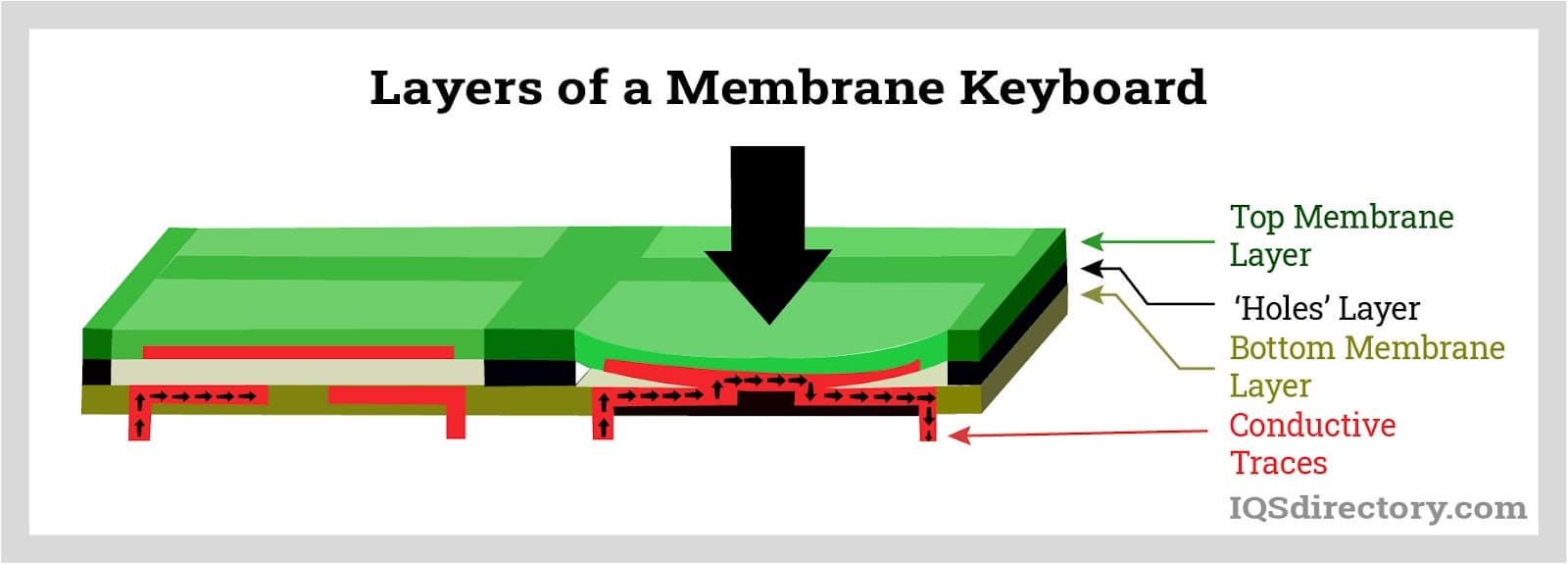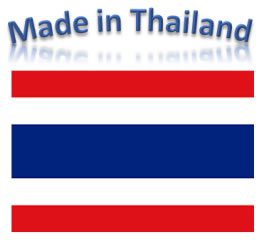Exploring membrane switch applications in harsh environments
The Manufacturing Refine Behind Membrane Switch Over: What You Need to Know
The production process behind membrane layer switches combines mindful design, product selection, and quality assurance. It begins with comprehending the intricacies of membrane layer switch style and proceeds with numerous stages, consisting of product choices and printing strategies. Each phase plays a crucial role in making sure functionality and toughness. The intricacies of layer building and construction and the extensive screening standards may expose understandings that are not instantly evident. What exists beyond these foundational aspects?
Recognizing Membrane Switch Style
Although membrane layer buttons might appear easy initially look, their layout involves elaborate considerations that ensure capability and longevity. The design process starts with a comprehensive understanding of user requirements, including the interface's intended application and environmental factors. Ergonomics is a crucial element, as the layout must promote convenience of usage while guaranteeing that tactile responses meets user expectations.Moreover, the layering of parts, such as visuals overlays, glue layers, and conductive traces, have to be precisely crafted. membrane switch. This split setup not only affects the button's responsiveness however also impacts its long life. Focus is provided to the sealing strategies used to shield versus moisture and dirt, which can jeopardize performance. In addition, style considerations encompass aesthetics, where color pattern and visual quality enhance customer experience. Eventually, the design of membrane layer changes balances capability, user experience, and durability, making certain that they satisfy the needs of different applications effectively
Products Used in Membrane Layer Switch Production
When selecting products for membrane button production, it is necessary to contemplate both efficiency and resilience. The key materials include polyester and polycarbonate movies, which offer adaptability and strength. These movies are frequently covered with glue to ensure correct bonding to substrates. Conductive inks, usually made up of silver or carbon, are important for developing electrical links within the switch, enabling reliable operation.Additionally, a protective layer, such as a tough coat, is frequently put on boost scratch resistance and durability. The option of backing product, such as acrylic or foam, can considerably affect the button's responsive feel and overall individual experience. Furthermore, different ecological factors, including temperature and humidity, must lead material selection to ensure peak performance in certain applications. Ultimately, the right combination of materials contributes to the membrane switch's functionality and life expectancy, making notified options important for manufacturers.
The Printing Refine: Creating Graphics and Text
The printing process in membrane switch manufacturing plays a substantial function in producing top notch graphics and message. Different graphic style methods are used to guarantee visual allure and capability, while mindful ink option techniques are necessary for longevity and efficiency. Comprehending these aspects is essential for achieving best lead to membrane layer switch design.
Graphic Style Techniques
Graphic design strategies play a necessary function in the printing procedure of membrane layer switches, as they specify how graphics and message will eventually show up on the last product. Efficient graphic layout includes the critical usage of designs, typefaces, and colors to improve readability and visual charm. Developers typically utilize vector graphics for scalability, making sure that images stay sharp at numerous sizes. In addition, attention to contrast and placement is important, as it affects customer interaction and visual top quality. The incorporation of branding aspects, such as logo designs, should be managed with treatment to maintain brand honesty. Overall, thoughtful graphic style strategies contribute significantly to the capability and attractiveness of membrane switches, affecting customer experience and item performance.
Ink Selection Techniques
Picking the ideal ink is important for accomplishing the preferred aesthetic top quality and resilience in membrane switch manufacturing. Different ink kinds are made use of, consisting of solvent-based, water-based, and UV-curable inks. Each kind offers distinct qualities, such as versatility, resistance, and bond to ecological aspects. Solvent-based inks are usually preferred for their durability and vibrant colors, while water-based inks are much more eco-friendly but may have limitations in attachment. UV-curable inks give quick healing and durable performance. Additionally, shade matching strategies assure that the chosen inks line up with design requirements. Inevitably, the selection of ink need to think about factors such as application method, substratum compatibility, and end-use demands to achieve superior lead to membrane layer switch graphics and message.
Layer Building And Construction and Assembly

Product Option Refine
A mindful selection of products is essential in the manufacturing process of membrane switches, as it straight affects capability and durability. The primary materials utilized consist of polyester, polycarbonate, and different conductive inks. Polyester is commonly preferred for its exceptional resistance to chemicals and abrasion, making it appropriate for extreme atmospheres. Polycarbonate, on the other hand, offers exceptional clarity and impact resistance, which is beneficial for applications calling for presence and effectiveness. Conductive inks, normally made up of silver or carbon, are important for creating dependable electric paths. Furthermore, the choice of adhesive products impacts the overall honesty of the button - membrane switch. Assessing factors such as ecological direct exposure, tactile responses, and visual requirements overviews makers in choosing the best products for their certain applications
Layer Adhesion Strategies
Adhering layers in membrane button building is a vital procedure that guarantees capability and durability. Various bond techniques are used to protect ideal bonding in between layers, which generally consist of making use of adhesives, warmth, and pressure. Pressure-sensitive adhesives (PSAs) are generally used for their convenience of application and instant bonding capacities. Furthermore, thermal bonding strategies can be applied, where warmth is utilized to turn on adhesive properties, protecting a solid bond. The option of attachment method mainly relies on the materials included and the specific application demands of the membrane layer switch. Appropriate placement and uniform application of adhesives are important to protect against problems, safeguarding the button operates successfully throughout its desired lifespan.
High Quality Control Procedures
Assuring quality control during the layer building and setting up of membrane layer switches is vital for keeping efficiency and reliability. This process usually entails numerous critical steps, including complete examinations at each phase of production. Manufacturers utilize sophisticated testing techniques, such as peel tests and bond evaluations, to confirm the stability of layer bonds. Furthermore, aesthetic examinations are performed to recognize any kind of issues in printing or product incongruities. Environmental conditions, such as temperature and moisture, are carefully monitored to guarantee ideal curing and attachment. Normal calibration of tools assists preserve precise production criteria. By carrying out these high quality control steps, manufacturers can significantly reduce the threat of item failure, assuring that the last membrane layer switches fulfill the required requirements and consumer expectations.
Testing and Top Quality Control Procedures

Developments in Membrane Layer Change Technology
As innovations in innovation remain to advance, membrane buttons are benefiting from cutting-edge advancements that enhance their capability and user experience. One remarkable development is the assimilation of capacitive touch innovation, which enables more receptive and user-friendly customer interfaces. This shift not just improves appearances however additionally decreases mechanical damage, extending the life expectancy of the switches.Additionally, advancements in graphic overlay products have caused boosted sturdiness and resistance to ecological factors such as wetness and UV light. These products currently provide improved quality and brightness, additional boosting the aesthetic appeal.Furthermore, the incorporation of wise modern technology is transforming membrane changes right into interactive control board, enabling connectivity Resources with IoT tools. This connection fosters a seamless individual experience, leading the way for applications in various markets, from health care to customer electronic devices. Jointly, these best site innovations setting membrane changes as essential components in contemporary gadget style.
Regularly Asked Inquiries
For how long Does the Membrane Switch Manufacturing Process Take?
The duration of the membrane button production procedure can differ considerably. Factors such as complexity, materials utilized, and production volume influence timelines, with common production varying from a couple of days to numerous weeks for conclusion.
What Are the Usual Applications for Membrane Layer Buttons?
Membrane layer buttons are generally made use of in various sectors, including vehicle controls, home home appliances, medical devices, and customer electronic devices (membrane switch). Their convenience and longevity make them excellent for applications calling for easy to use interfaces and dependable performance in diverse environments
Can Membrane Layer Switches Over Be Personalized for Particular Needs?

What Is the Life-span of a Regular Membrane Switch?
The lifespan of a common membrane switch varies, however normally, it varies from 1 to 5 million cycles. Aspects such as use, setting, and material high quality substantially affect longevity and total efficiency with time.

Are Membrane Switches Over Eco Pleasant?
The environmental friendliness of membrane layer changes varies. Some materials made use of might not be recyclable, while others can be green. The general impact relies on making methods and materials, necessitating mindful factor to consider during option and disposal. The production process behind membrane layer changes combines cautious layout, material selection, and high quality control. It starts with understanding the ins and outs of membrane layer switch design and advances via different phases, consisting of material selections and printing techniques. When selecting materials for membrane button production, it is vital to ponder both performance read here and longevity. A mindful selection of materials is essential in the production process of membrane layer switches, as it directly affects performance and toughness. The selection of bond approach largely depends on the products involved and the certain application demands of the membrane layer switch.